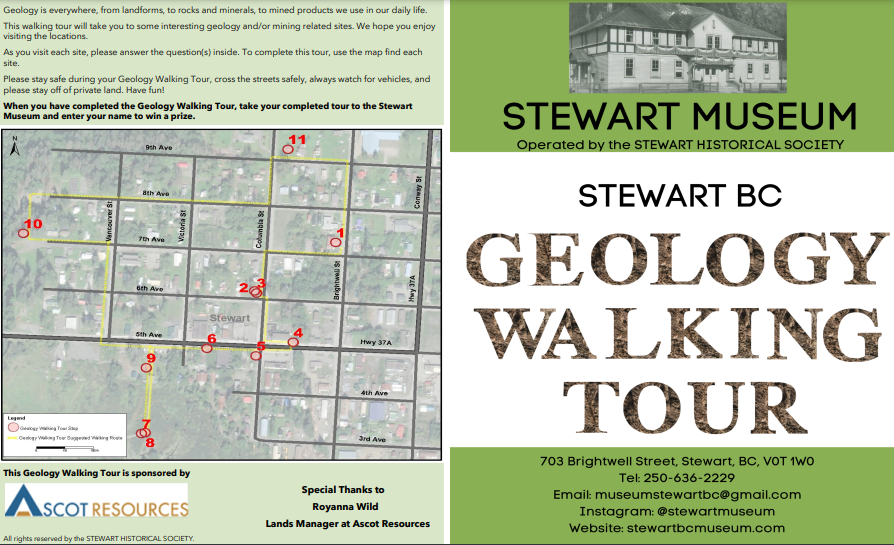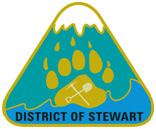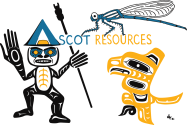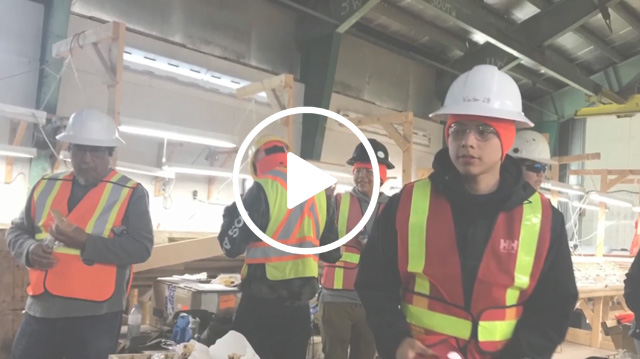At Ascot Resources, we believe successful operations involve making a positive impact in the communities where we work. We are working closely with Nisg̱a’a Nation and the District of Stewart to ensure the responsible development of our projects by actively building and maintaining open, respectful, and collaborative relationships together.
We are proud of our relationship with Nisg̱a’a Nation and we are honoured to be guests on Nisg̱a’a territory. Thank you to Nisg̱a’a Nation for approaching the development of this project as a partnership where we work together to meet each other’s needs.
Thank you also to the community of Stewart for their unfailing support and for sharing their long history and knowledge of mining in the area with us.
Tooyaksiy̓ n̓iin – Thank you
Ascot is pleased to have collaborated with the Stewart Museum on a Geology Walking Tour. There are many interesting artifacts, rocks and stories about mining in the Stewart area. Pick up a pamphlet at the museum to go on a self-guided tour or download this one. At the museum, look for the drill core (cylinders of rock). The drill core shows what type of rocks are found below the surface of the earth, and helps geologists and miners understand the geology. There are lots of interesting questions in the hand-out such as: How many pieces of drill core are found in the Mine Tunnel Display Room?
Visit https://www.stewartbcmuseum.com/
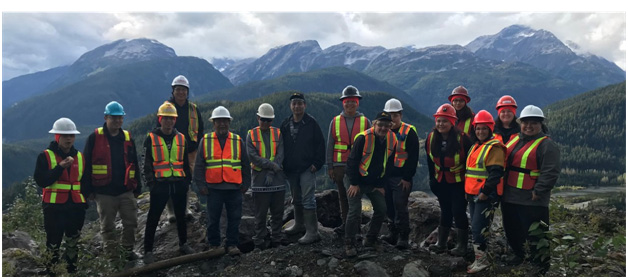
Q & A
How do local communities benefit from the mine?
Ascot supports the local communities including the District of Stewart and the four Nisg̱a’a Villages by hiring locally for full-time and seasonal employment and contract opportunities wherever possible. As we move into construction and operation, we are committed to continuing to do so, while also connecting people to the training necessary to participate in our workforce as it grows. We believe that employment and employment income is a key benefit to the local communities.
Has Ascot been engaging with the local First Nations?
The Premier Gold Project and the Red Mountain Project are located on Nisg̱a’a Nation lands.
The Premier Gold Project is located in the Nass Area and the Red Mountain Project is located in the Nass Wildlife Area, as defined in the Nisg̱a’a Final Agreement, a modern treaty between the federal government, provincial government, and Nisg̱a’a Nation, which sets out Nisg̱a’a Nation’s rights under Section 35 of the Canadian Constitution Act.
Ascot is working closely with Nisg̱a’a Nation to assess the impacts of the Premier Gold Project and Red Mountain Project on Nisg̱a’a Treaty Rights. Nisg̱a’a Nation citizens have Treaty rights to manage and harvest wildlife in the Nass Wildlife Area and to harvest fish, aquatic plants, and migratory birds within the Nass Area. The clarity and certainty provided by the Nisg̱a’a Final Agreement is a major advantage to development.

